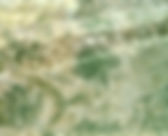
about
Aerosol particles - microscopic bits of dust, soot, and sea spray suspended in the air - are the most poorly understood component of Earth's atmosphere. Our atmosphere is made up primarily of gases. In addition to these gases, our atmosphere also contains very small liquid droplets and solid particles, known as particulate matter (PM).
These particles play an important role in human health and climate that we will explore with these activities.

hands-on science

art activities

storytelling

additional resources

Climate Science & Atmospheric Chemistry Traveling Trunk
While participating in the Climate Kids activities of art, science and storytelling, students will gain an understanding of the current science behind atmospheric chemistry, the impact of aerosols on climate and public health, and how scientists are working to better understand the issues that we face at the intersection of these topics.
Activity Type
Multimedia
Activity Time
Varies

Climate Science + Atmospheric Chemistry Traveling Trunk Training
Learn how to use the Climate Science + Atmospheric Chemistry Traveling Trunk with your student group.
While participating in the Climate Kids activities of art, science and storytelling, students will gain an understanding of the current science behind atmospheric chemistry, the impact of aerosols on climate and public health, and how scientists are working to better understand the issues that we face at the intersection of these topics.
Activity Type
Video
Activity Time
14 minutes


























